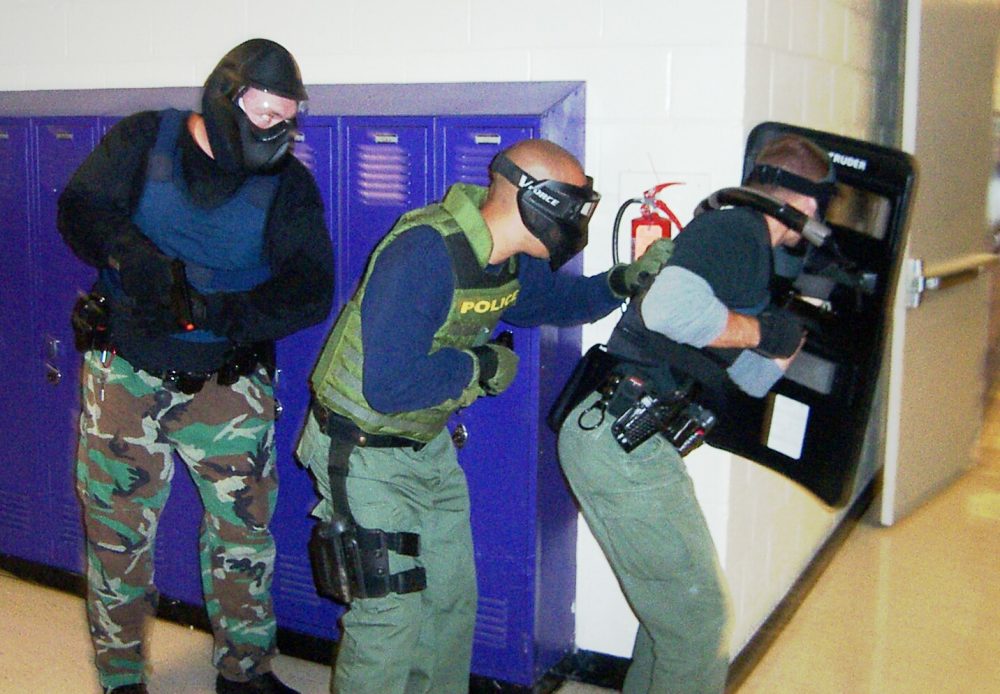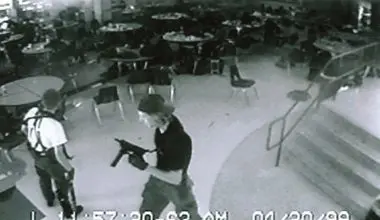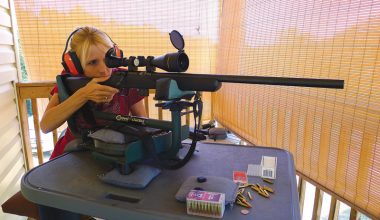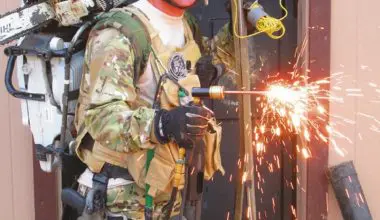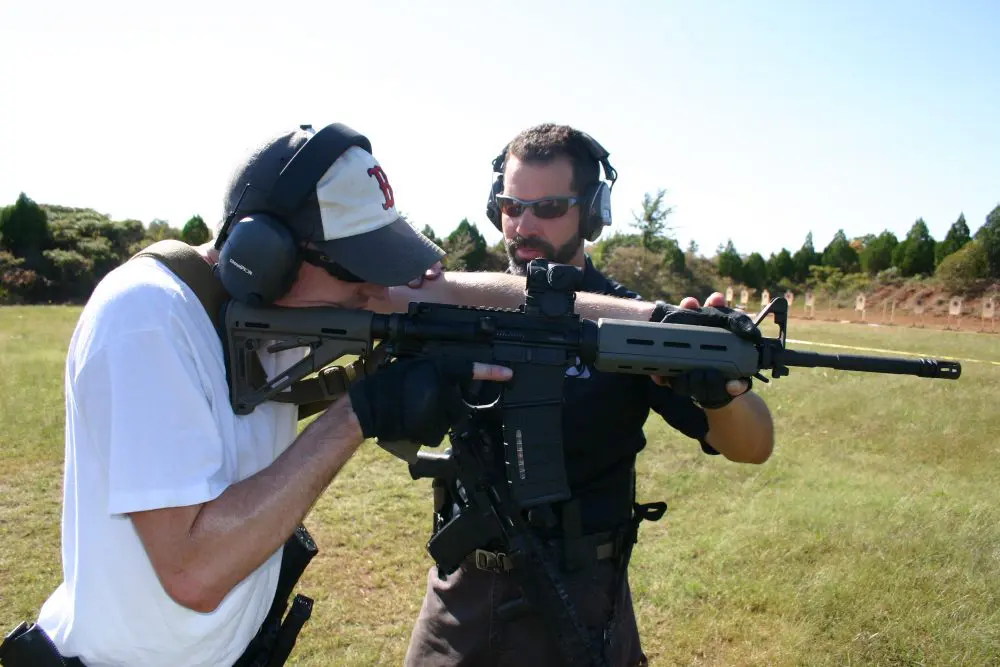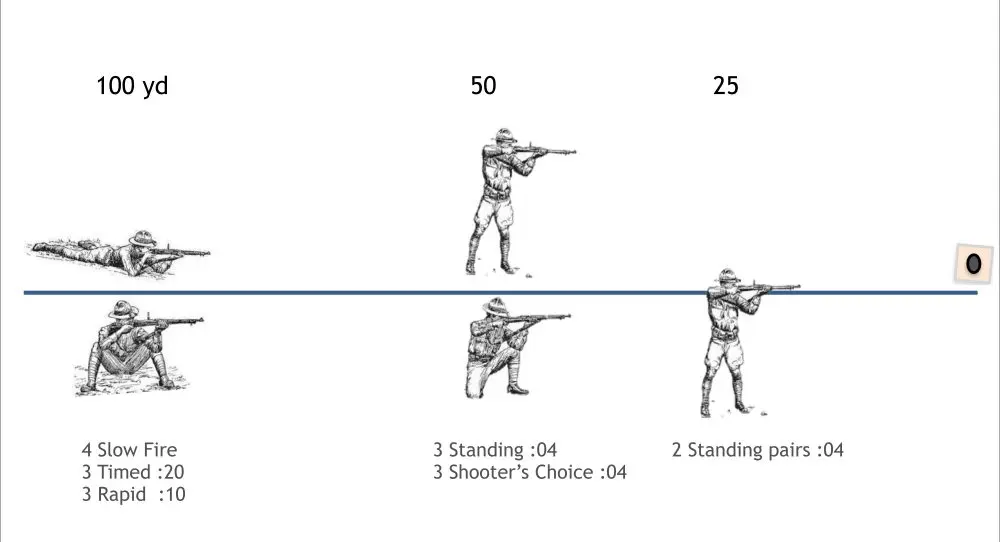Formed in 1957, the Australian SAS has participated in numerous conflicts in Southeast Asia and is an active partner in the Global War on Terror.
One veteran of the Australian SAS, Jason Falla, now teaches firearms and tactics in the United States.
Falla served six years with the Australian Commando Regiment and a further six in the SAS. He’s seen action in combat zones including Iraq, Afghanistan, East Timor, and New Guinea. In 2005 he relocated to the U.S. and instructed at Blackwater for five years. He then formed Redback One, a diverse training group that provides instruction in firearms and tactics to private citizens as well as law enforcement, military and protective services.
Redback One has now partnered with Grey Group Training to bring Falla to more venues.
Jason, who embodies the stereotype of the easygoing, friendly Australian, has also served as co-host with Larry Vickers of the cable TV shows Tactical Arms and Tactical Impact, both of which air on The Sportsman Channel.
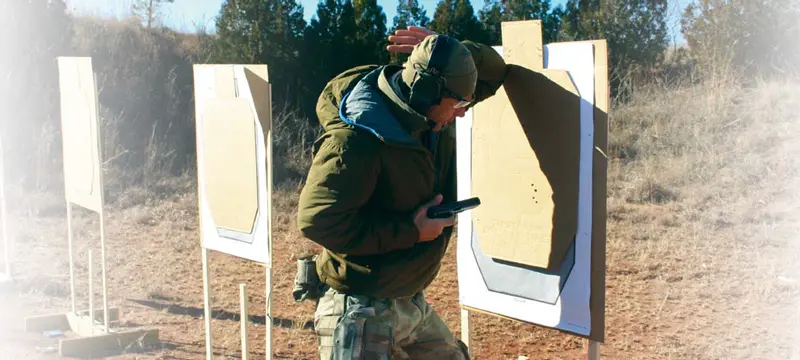
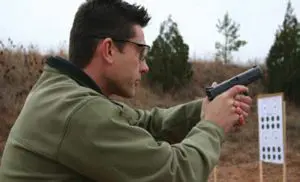
Table of Contents
SIGN ME UP
Given these factors, I jumped at the opportunity to take a class from Falla when it was offered in my area. This would be a special three-day course that would cover both the handgun and carbine.
Beginning with his introductory lecture and continuing throughout the class, Jason made a great deal of effort to relate to the class the ramifications of the use of force as it applies to American civilians. Jason affirmed his commitment to civilian gun ownership, especially since he hails from a country that has stripped its citizens of many of their firearms rights, as well as almost eliminating their right to use firearms in self-defense. He delved into a variety of topics, such as multiple attackers and group psychology, and examined what causes people to band together to commit illegal activities.
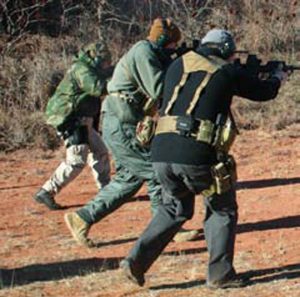
TRAINING DAY ONE: HANDGUN
The first day of training dealt solely with the handgun. We started from square one and ultimately covered everything from the drawstroke to reloads to malfunction clearances. Jason believes in developing a transferable skill set as much as possible—for example, keeping the actions used to initially load a gun as similar as possible to those used to execute combat reloads and malfunction clearances. This, he explains, helps to build the correct neural pathways, since you are using similar motions to accomplish different things.
Jason went over the seven fundamentals of shooting—stance, grip, sight alignment, sight picture, trigger control, breathing and follow-through—and how they affect your performance. In doing this, he used examples of his own experiences and those of groups he has worked with around the world. He believes that ideally if you train enough, you will make these fundamentals part of your actions and commit them to your subconscious. Then when it comes time to shoot, you won’t have to think about anything except shot placement.
Of the seven fundamentals, trigger control and sight alignment are the most essential to achieving accuracy, with jerking the trigger the number one problem plaguing shooters.
Two major causes of jerking the trigger are anxiety and trying to shoot faster than you are able. To this end, Jason advised concentrating on 100% accuracy but not shooting at more than 90% speed. This was one of the more important pieces of advice relayed in the class. Often people try to get the shot off too quickly and either fire before the sights are aligned or yank the trigger and pull the gun off target, resulting in outright misses or greatly diminished accuracy.
Jason builds the shooting platform beginning with the proper grip. He teaches the thumb-over-thumb grip, which provides 360 degrees of contact with the hand on the pistol. This firmly controls the handgun during recoil and brings the muzzle back down as close as possible to where it was when the shot broke, providing quicker follow-up shots. This grip is employed in conjunction with the Redback One combat stance, which is similar to the Modern Isosceles stance.
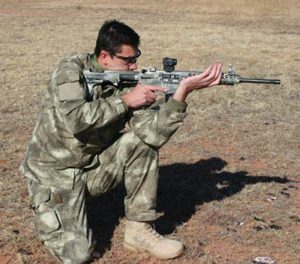
COMBAT STANCE AND DRAWSTROKE
In his own implementation of this stance, Jason keeps his elbows parallel with the gun’s slide. This helps him to cam his hands together and maintain a stronger hold on the grip. This camming, along with gripping the gun as high up as possible, allows you to manage recoil more effectively and decreases your shotto- shot recovery time. When it comes to stance, Falla believes you need to be able to function without specific foot placement, because there’s no guarantee where your feet might be in an emergency.
Falla teaches a three-phase drawstroke to bring the gun to bear. In the first phase, a grip on the gun in the holster is established and any retaining devices are disengaged. Establishing a correct grip is crucial: without it your entire shooting platform will be compromised. In the second phase, the handgun is drawn from the holster and any manual safeties are immediately disengaged, and the gun is brought into a two-handed grip in a high ready position.
On the third count, the gun is extended and fired. Jason stressed that drawing and firing are two separate acts. Just because a handgun is drawn does not mean that it will always be fired.
In the high ready position, the handgun is held with its muzzle angled above the target and the front sight in line with your shooting eye and visible in your peripheral vision for quicker acquisition.
Falla is a big proponent of high ready for both handguns and long guns. He feels it permits better mobility during rapid movement than low ready, and that it is superior for moving in close proximity to suspects, unknowns, or friendlies.
While Jason considers high ready an optimal ready position for most circumstances, he points out the low ready is better for holding or taking someone at gunpoint because it allows clear observation of their hands and quicker presentation to the target.
Though Falla’s typical drawstroke does not employ a retention position as one of the steps, he does teach retention shooting as a separate technique. He points out that you will recognize when the situation is so close that it requires retention shooting and you will apply it naturally without having to incorporate it as part of your drawstroke. We covered this in depth on the third day of class.
LIVE FIRE
We began our live-fire handgun work with slow-fire drills at distances ranging from five to 25 yards. Falla starts the class this way to allow him to gauge the skill level of the shooters and diagnose any problems. We fired at target sheets designed by Jason that employ different sized dots, bulls and outlines. These targets represent high probability and low probability targets, depending on the size of the specific target and the distance, and thus lend themselves to a variety of drills that emphasize different aspects.
Sometimes the drills required engaging a mix of high and low probability targets in a specific sequence, which meant the shooter had to speed up and slow down within the same string of shots. We did exercises that examined different levels of precision with our sight pictures and then reinforced the lesson by engaging closer, easier to hit targets in shorter time limits, thus requiring more speed than precision.
In achieving multiple hits on a target with rapid handgun fire, Falla stressed the importance of keeping your eye on the front sight and not shifting your view back and forth from the target, as this often leads to misses.
AR TIME
The next two days of the class focused on the AR, a platform Falla has a great deal of experience with from both the Australian Commando Regiment and the SAS. While Falla considers the U.S. to be the Mecca for AR training, since coming to the U.S. he’s seen more function issues and breakages with AR-type weapons than in all of his Australian military service.
Some of this Jason attributes to the more proactive manner in which the Australian armorers replace parts, and some to the fact that end users in Australia tend to more heavily lubricate their guns (see KEEP IT RUNNING, December 2006 S.W.A.T.). Jason has seen more than his share of dry ARs here in the States.
In the civilian and law enforcement sectors, Jason has noticed additional issues with ARs and parts manufactured by lower-grade companies that might be suitable for light use, but not for running hard or staking your life on.
TRAINING DAY TWO
We began the second day by working on our zeros for the AR. Before zeroing, Jason went over natural point of aim, but stressed that this was more about zeroing as it was rarely possible to establish such a point of aim in dynamic combat.
We started from prone at 25 meters with the goal to shoot a five-shot, oneinch group. Jason likes to begin a class this way because it allows him to assess the class members’ marksmanship. The object was to produce a group one inch below the point of aim at this distance, which would put it dead on at 50 meters, about two inches high at 100 yards and back on at 200.
From there we backed up to 50 yards and finally to 100 yards, where we fired ten-shot groups from prone. At 100 yards, our goal was to fire ten shots into no more than four inches. Jason stressed the importance of not shifting your body at all between the first and last shots of the string of fire. Shifting the body often manifested itself in split groups, where some of the shots were clustered in one area and other shots bunched in another. After a few iterations, Jason introduced a time element.
Next we moved to kneeling at 75 yards. Jason believes that kneeling is an important position that doesn’t get practiced enough. Jason introduced us to a lesser-known version of the position known as “bone-hang kneeling,” where the support arm comes under the gun in a manner that places the magazine on the outside of that arm. This position, though it does take some getting used to, represents a stabler form of kneeling because the long gun is supported more firmly.
Jason next covered the offhand position. He advocates having the support hand grasp the handguard as far forward as possible. This allows stronger control of muzzle rise and makes it faster to transition between targets. Though Jason does advocate an extended grip, he recognizes that this is not a comfortable position for everyone, so he doesn’t expect students to extend their support arm out as far as he does. We fired rapid cadence drills to work on this.
Speaking of transitioning among multiple targets, a common problem is overshooting the target you are transitioning to. To overcome this, we practiced moving fast but deliberately slowing down our swing before we reached the second target. We ended the day with a timed diagnostic drill that combined most of the day’s lessons.
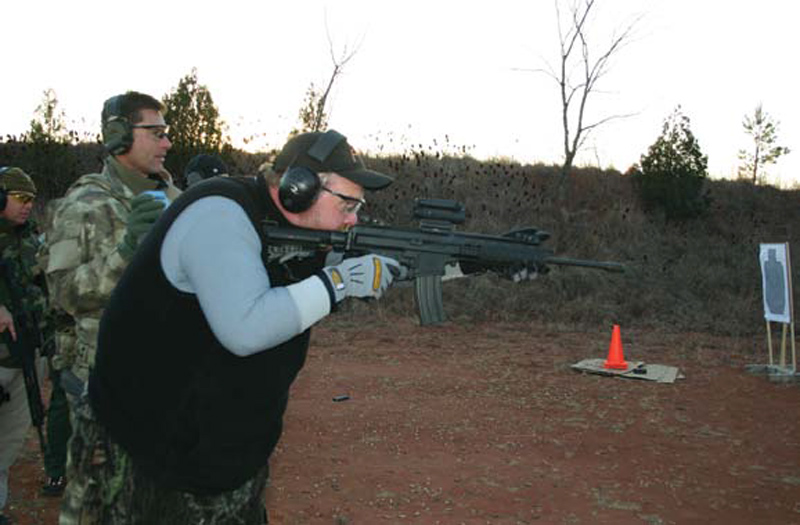
TRAINING DAY THREE
On the third day of class, we reviewed some of the previous days’ lessons. We then returned to the handgun to cover close-in retention shooting.
Falla teaches a close-in position that incorporates an elbow cover with the nonshooting arm, and the class underwent hands-on exercises in maintaining balance against another person’s force.
The class paired up and practiced the technique without guns, then practiced live fire against targets, and ultimately integrated it into a multiple-attacker scenario while engaging two targets. We began by striking the target in front of us and engaging it from a retention position, then backing off to create distance followed by engaging a second target.
Next up was shooting on the move and turning drills with long guns, then Falla integrated everything into some man-onman and team competitions.
We ended the day by firing the handgun at a 12” x 18” plate from offhand, starting at 50 yards and moving back to 100. This exercise required nothing less than 100% concentration to maintain sight alignment in the cold wind, break the trigger without upsetting the sight alignment, and maintain follow-through on the gun to keep it on target. Most people took several shots to hit the target at longer ranges, but almost all hit it.
By this time the sun was setting, the Oklahoma wind was whipping the temperature down into the teens, and the students were worn out after three long days. In total, I had expended nearly 1,800 rounds of Black Hills ammo.
Jason Falla embodies the American dream. In 2005 he came here with just his expertise, and within five years he was running his own training company. He has moved beyond training to enter the consultation and evaluation fields, and is now expanding his partnership with Australian gear manufacturer SORD to produce his own lines of uniforms and tactical nylon gear, many of which will soon be produced in their new stateside facilities.
It’ll be interesting to see what Jason Falla will be up to once he’s been here for a decade.
